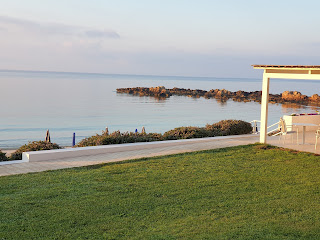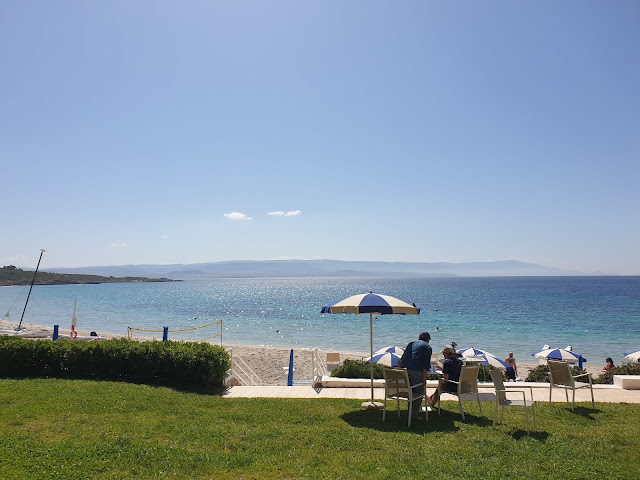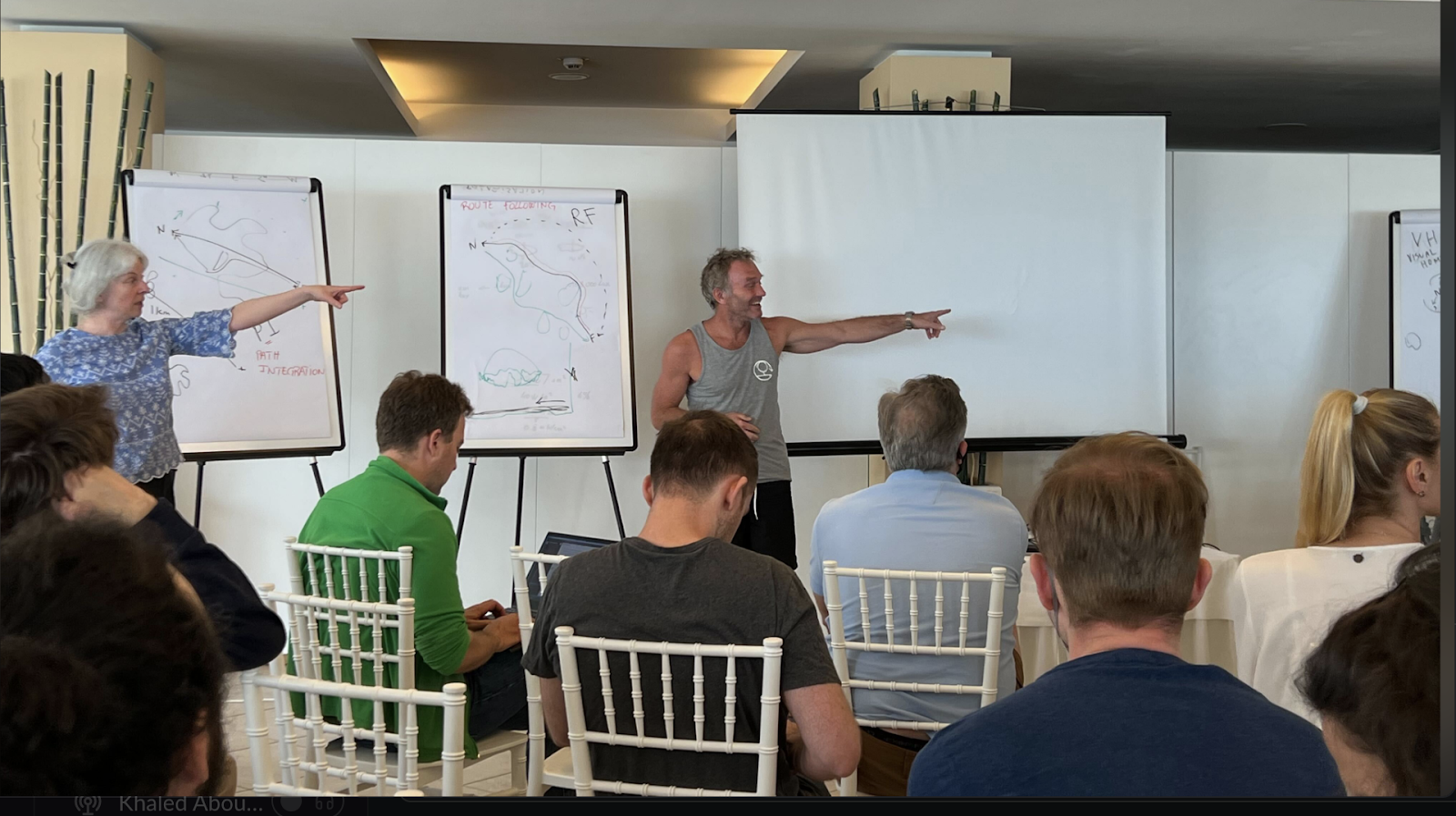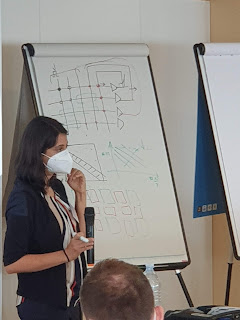Workshop opening and 6 word self intros
For those who arrived on Saturday or early Sunday there were great opportunities to explore the shore towards Fertilia, go snorkeling, play a bit of tennis or football, work on their tans and build sand castles, and even start setting up stuff in the lab
After the Sunday reception people enjoyed the usual great buffet and some people stayed up till 1am chatting
This morning Giacomo started things off with some personal stories of the long history of the neuromorphic workshops starting around 1994 with the first Telluride workshop and how the organization of Telluride happened over the period up to 2008.
Then he recounted how the CCNW workshop started, around 2007, the first year at a research station near the tip of Capo Caccia about an hour from Alghero. And how Simone and Kathrine found the Hotel Capo Caccia just next to the research center after exploring Sardinia for days to find some alternative. This hotel was built in the 1970s and is located in a beautiful location quite far from Alghero.
However the director of the hotel had a large photo of him sitting with Berlusconi and the hotel was shut down and some of the staff were thrown in prison for tax evasion. Then Simone and Kathrin found the lovely Hotel dei Pini that the workshop has been at for the last 7 years or so, about 15m by car from Alghero and 5 minutes by car from Fertilia which has one small Coop market.
History of registrations
- 30 2007
- 90 2008
- 2005-2006 120 registered, 80 present at one time, steady at this level from hotel capacity
- 135 registered this year, at limit of hotel
Following Giacomo's introduction, Chiara Bartolozzi, Germain Haessig and Melika Paywand went over the some ideas on how the participants could best interact during the sessions, an overview of the schedule, and how to use the workshop scheduling and wiki features.
Next German provided a helpful summary of the stated aims or goals of the participants who filled out the survey (about 50% of registered participants)
- Neuromorphic perception for/and control (the for and and were a subject of contention and immediate debate...)
- Learning
- From single neurons to network dynamics
- Neuromorphic hardware from devices to systems
Participants broke for morning 2nd (or 3rd or 4th) coffee and further last moment organizing. After the break, participants were invited to introduce themselves by placing themselves into one of the main themes and invited to describe themselves with at most six words. These were carefully noted by Matthew Cook and 2 others to generate a word cloud and statistics.
Participants were then invited to gather into 4 areas for a general getting to know each other better session and then broke for lunch. The photo below is from the perception and control group.
After lunch, Melika Paywand and Jorg Conradt organized a useful newbies session to explain the terminology and focus areas of neuromorphic physical computation, with a focus on activity-driven event sensing, advanced nonvolatile and malleable memory technologies, and structures and approaches for computing.
There was a useful introductionsof the Brainscales mixed-signal processors, gen 2 in 65nm CMOS, with a focus on accelerated neural simulation pioneered by a series of well-funded European projects including the controversial Human Brain Project. The team has continued to improve BrainScales for better usability and to provide prebuilt components that can be assembled. They brought along 4 complete systems for participants to use for projects.
Dylan Muir introduced the company SynSense that develops some digital SNN chips and a Speck sensor that integrates a DVS with a small CNN-SNN processor. This compact board seems a nice platform for exploring possible application areas like object trackers or classifiers that can beat hand-crafted detectors.
Yuila Sandamirskaya introduced the Intel Loihi processors - they brought Loihi 1 and will provide remote access to Loihi 2 that moves past the binary spiking of gen 1 to transmit activation values or their change along with the spikes, as is done in the activation-sparsity aware CNN and RNN accelerators developed by mainstream AI groups, like EyeRiss, NullHop, and DeltaRNN. One particular aim is to get feedback on their Lava software framework for using the Loihi processors and in particular to the utility of local synaptic learning circuits.
Jorg Conradt then introduced the SpiNNaker series of SNN accelerators developed in Manchester and now Heidelberg, and Simon Thorpe briefly mentioned the commercial developments of the startup BrainChip.
This tutorial session was followed by a show-and-tell of hardware that people had brought and that brought us to the first meeting of the workgroup on neuromorphic activity-driven perception and control.
People then dispersed to the daily sports break and happy hour.













Comments
Post a Comment